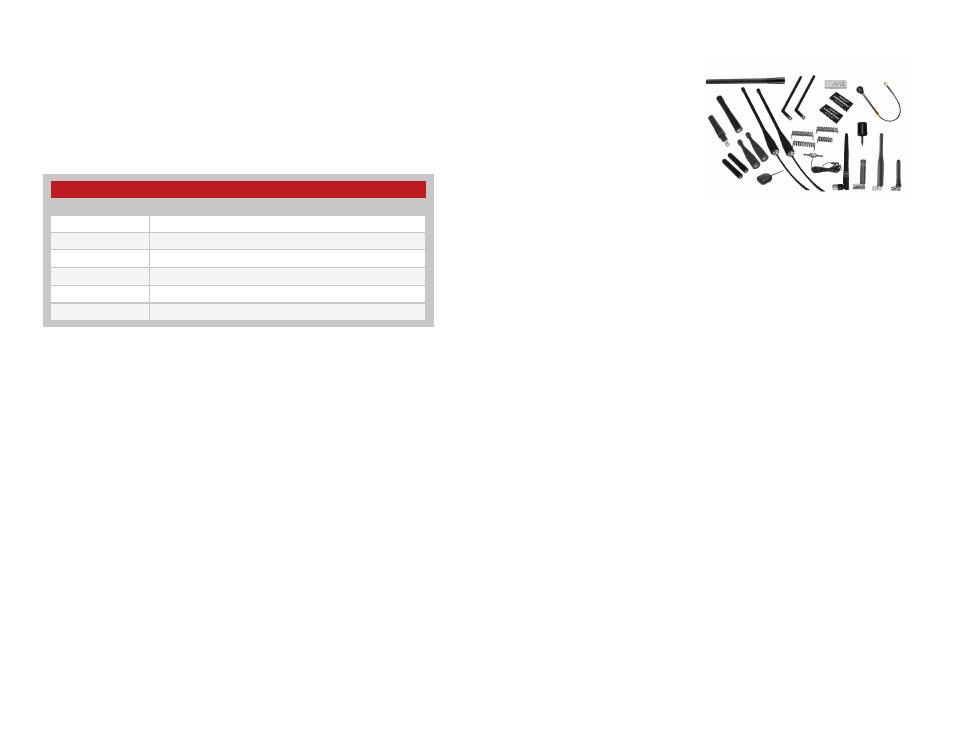Helpful application notes from linx, Antenna considerations – Linx Technologies RXM-xxx-ES User Manual
Page 13

– –
– –
20
21
Helpful Application Note Titles
Note Number
Note Title
AN-00100
RF 101: Information for the RF Challenged
AN-00126
Considerations for Operation Within the 902–928MHz Band
AN-00130
Modulation Techniques for Low-Cost RF Data Links
AN-00140
The FCC Road: Part 15 from Concept to Approval
AN-00160
Considerations for Sending Data over a Wireless Link
AN-00500
Antennas: Design, Application, Performance
Helpful Application Notes From Linx
It is not the intention of this manual to address in depth many of the issues
that should be considered to ensure that the modules function correctly
and deliver the maximum possible performance. As you proceed with your
design, you may wish to obtain one or more of the following application
notes which address in depth key areas of RF design and application of
Linx products. These application notes are available online at
www.linxtechnologies.com or by contacting Linx.
Antenna Considerations
The choice of antennas is a
critical and often overlooked
design consideration. The range,
performance, and legality of an
RF link are critically dependent
upon the antenna. While adequate
antenna performance can often
be obtained by trial and error
methods, antenna design and
matching is a complex task. A
professionally designed antenna,
such as those from Linx, will help ensure maximum performance and FCC
compliance.
Linx transmitter modules typically have an output power that is slightly
higher than the legal limits. This allows the designer to use an inefficient
antenna, such as a loop trace or helical, to meet size, cost, or cosmetic
requirements and still achieve full legal output power for maximum range. If
an efficient antenna is used, then some attenuation of the output power will
likely be needed. This can easily be accomplished by using the LADJ line or
a T-pad attenuator. For more details on T-pad attenuator design, please see
Application Note AN-00150.
A receiver antenna should be optimized for the frequency or band in
which the receiver operates and to minimize the reception of off-frequency
signals. The efficiency of the receiver’s antenna is critical to maximizing
range performance. Unlike the transmitter antenna, where legal operation
may mandate attenuation or a reduction in antenna efficiency, the receiver’s
antenna should be optimized as much as is practical.
It is usually best to utilize a basic quarter-wave whip until your prototype
product is operating satisfactorily. Other antennas can then be evaluated
based on the cost, size, and cosmetic requirements of the product.
You may wish to review Application Note AN-00500 “Antennas: Design,
Application, Performance”
Figure 22: Linx Antennas
Figure 21: Helpful Application Note Titles
